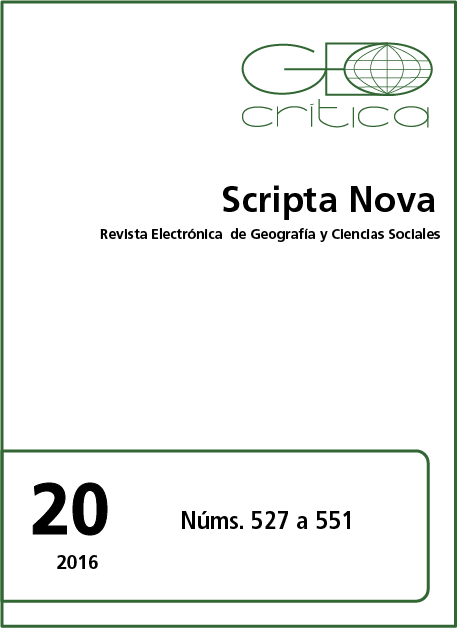534. Genesis of a geographical tradition: atlas published by Tomás López, 1730-1802
DOI:
https://doi.org/10.1344/sn2016.20.16788Keywords:
Atlas, cartographic representation, geographical culture, Tomás López, Eighteenth CenturyAbstract
Along of the second half of century XVIII, Tomás López (1730-1802) published six atlas. The first three, the most basic and with which is given to know, does during its stage of pensioner in Paris (1752-1760). After his return to Madrid, he undertook the preparation of his Atlas Geográfico de España, an ambitious project to which he devoted three decades of his life (1760-1792); and in the twilight of his days he composed two anthologies, one universal (1792) and other historical (1801). This unique legacy, the first in our history, reveals the dawn of a professional practice of geography consisting in the iconographic representation of territorial knowledge. Furthermore, access and regular consultation by the society helped nurture and shape their geographical imagination. His invention is due to the change of sensitivity experienced by anxious rulers, eager to have greater and better geographic information of the country. The reception dispensed, beyond the nobility and authorities, was not very enthusiastic. On the other hand, the historiography has shown little generosity with his work, striving to highlight its shortcomings. These criticisms launched from the dogmatic assumption of the virtues of other methodological processes used in the display of this knowledge and his desire to deploy it in Spain. We lack of looks that, in addition to scrutinizing the map-territory relationship, unveil their political, social and ideological meanings.Downloads
Published
2016-04-15
Issue
Section
Articles
License
Los autores que publican en esta revista están de acuerdo con los siguientes términos:
- Los autores conservan los derechos de autoría y otorgan a la revista el derecho de primera publicación, cin la obra disponible simultáneamente bajo una Licéncia de Atribución Compartir igual de Creative Commons que permite compartir la obra con terceros, siempre que estos reconozcan la autoría y la publicación inicial en esta revista.
- Los autores son libres de realizar acuerdos contractuales adicionales independientes para la distribución no exclusiva de la versió de la obra publicada en la revista (com por ejemplo la publicación en un repositorio institucional o en un libro), siempre que se reconozca la publicación inicial en esta revista.





